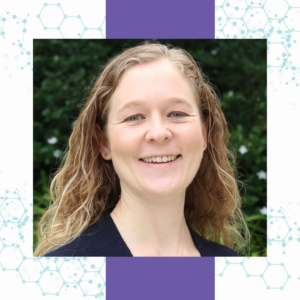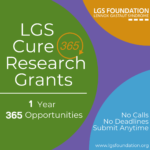2019 Grant Recipients – Daniel Shrey, Beth Lopour, & Mary Zupanc
The Effects of Felbamate on the Evolution of LGS

Daniel Shrey, MD

Beth Lopour, PhD

Mary Zupanc, MD
Children’s Hospital of Orange County
Highlights:
- Evaluated the efficacy and safety of felbamate for treatment of epileptic spasms
- Quantified felbamate exposure by calculating peak and weighted-average weight-based dose.
- Phenotypes with unprovoked electrographic seizure activity were identified in zebrafish lines for 8 genes.
- Created an open-source database containing sequencing information, survival curves, behavioral profiles and representative electrophysiology data.
- This study suggests that felbamate may be efficacious for treatment of epileptic spasms.
Results:
Several small case series provide conflicting impressions of the efficacy of felbamate for treatment of epileptic spasms. Using a large single-center cohort of children with epileptic spasms, we retrospectively evaluated the efficacy and safety of felbamate. We identified all patients with video-EEG confirmed epileptic spasms who were treated with felbamate at our center. We quantified felbamate exposure by calculating peak and weighted-average weight-based dose. Clinical response was defined as resolution of epileptic spasms for at least 28 days, beginning not more than 3 months after felbamate initiation. Electroclinical response was defined as clinical response accompanied by overnight video-EEG demonstrating freedom from epileptic spasms and hypsarrhythmia. Our study suggests that felbamate may be efficacious for the treatment of epileptic spasms and that further rigorous study is warranted.
Felbamate in the treatment of refractory epileptic spasms
Lay Abstract:
Lennox-Gastaut Syndrome (LGS) is a form of severe epilepsy that affects children beginning at 1-8 years of age. One of the most dramatic effects of LGS is its ability to slow or stop the development of normal brain function. It is believed that the developmental impact of LGS is due to multiple causes, including but not limited to (1) the underlying cause of the LGS, (2) the burden of poorly controlled seizures, and (3) the evolution of the epilepsy itself, which can manifest as starkly abnormal appearing brain waves when recorded by an electroencephalogram (EEG). These abnormal EEG patterns have been studied, and it is theorized that the brain activity underlying these patterns can disrupt normal developmental brain networks, leading to developmental delay. Therefore, we first propose to study the evolution of these abnormal brain patterns over large periods of time, starting from the time of epilepsy onset and ending months or years later, after the diagnosis of LGS is given and treatment is started. We will measure how these brain patterns start to change prior to the time of LGS diagnosis, and develop methods to identify patients with LGS sooner than is currently possible. In prior work, we discovered that measuring brain networks (using a tool called functional connectivity) and measuring correlations in brain waves (using a measure called long-range temporal correlations) can help to identify children with another type of severe epilepsy called infantile spasms. We have found promising results in our ongoing research that functional connectivity can be used to measure the severity of LGS and calculate the response to medication. Second, we propose to look at how a strong seizure medication, felbamate, affects the evolution of LGS, specifically seeing if we can quantify its initial effect on the patient’s brain networks. Felbamate is an effective seizure treatment for LGS that is not used frequently enough by doctors. To address this, we will study the reasons felbamate is not used by clinicians, and we will write a guide to educate others about the effective and safe use of felbamate in LGS. Ultimately, our main goals are (1) to improve our ability to diagnose LGS earlier, therefore creating opportunities for early intervention, and (2) to improve the treatment of LGS using felbamate, from the standpoints of seizure control, cognitive development, and tolerance of the medication. Achieving these goals will lead to improved quality of life for patients with LGS and their families.
 The LGS Foundation accepts unsolicited proposals year-round to seed new basic, translational, and clinical research projects on LGS. Projects may be funded at the $25,000, $50,000, or $75,000 level.
The LGS Foundation accepts unsolicited proposals year-round to seed new basic, translational, and clinical research projects on LGS. Projects may be funded at the $25,000, $50,000, or $75,000 level.
Updated 01/09/25 (KK)
